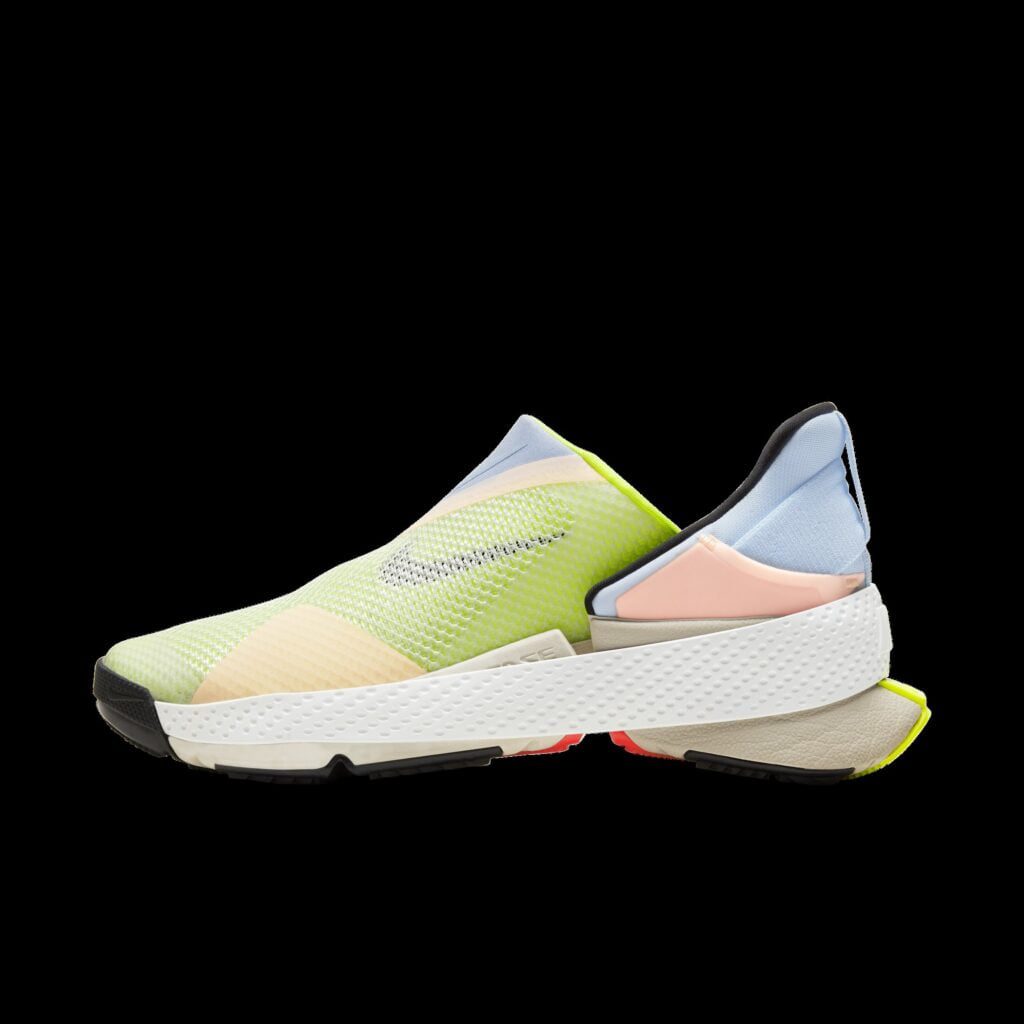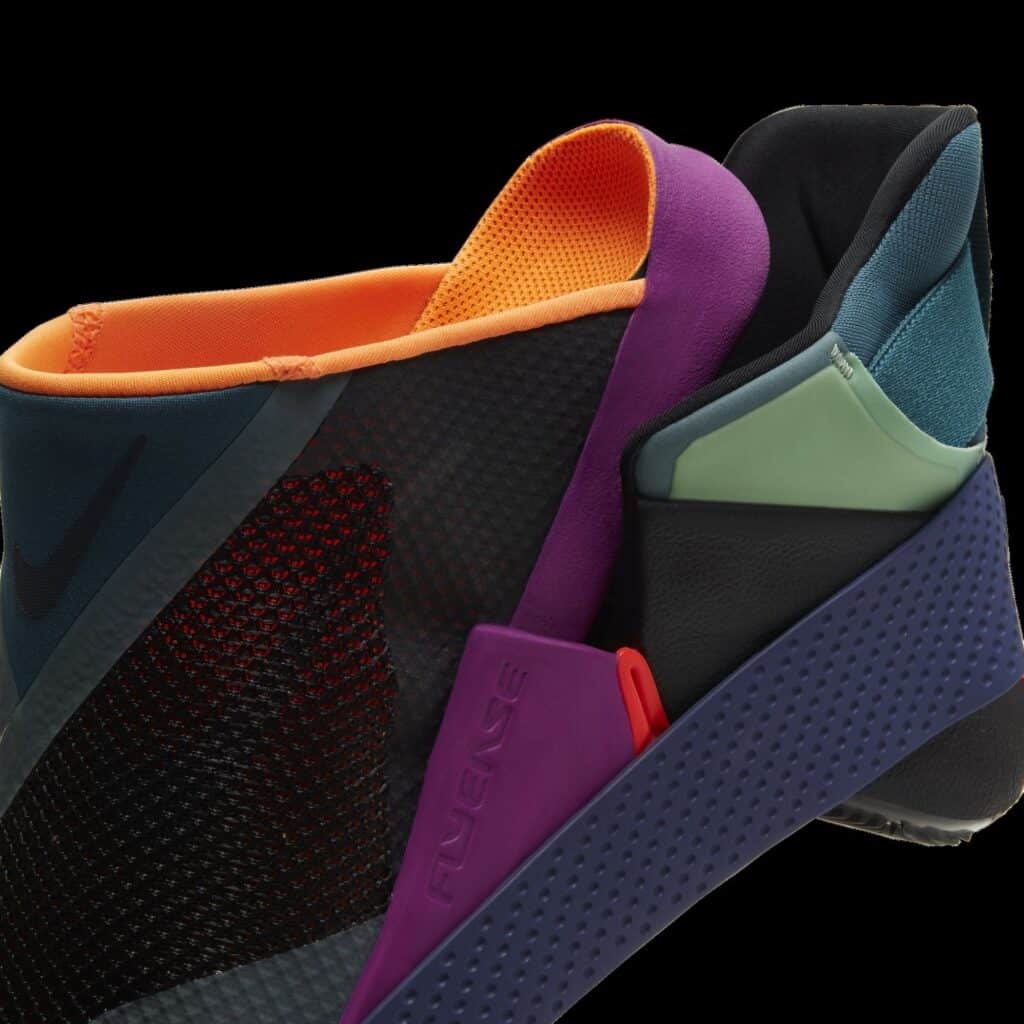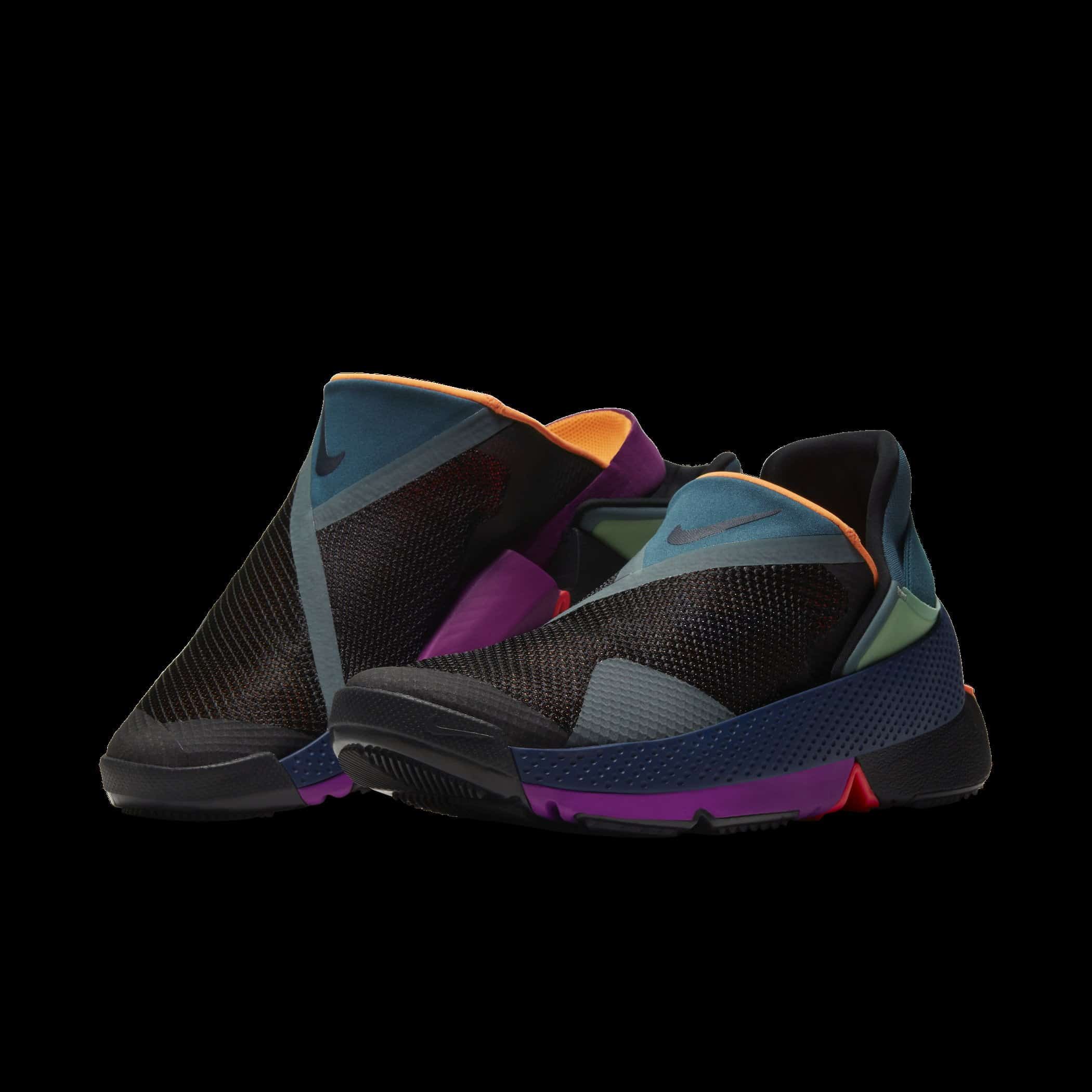The US company today announced its shoe for athletic and daily use: around €100 in price to do what we have all done sooner or later with footwear of all types.
The main innovation of GoFlyEase it's a so-called "bistable hinge" that allows the Nike contactless shoe to move between two positions.
Basically two shoes
GoFlyEase has a vertical position in which the inner sole of the shoe is at an angle of about 30 degrees so you can slide your foot easily, and one in which the outer “shell” fits snugly over the inner one while walking or running . They are effectively two shoes in one, with the inner shoe popping out if needed.
The concept of the Nike shoe comes precisely from the standard movement that most people make when taking off shoes like Crocs (random one, me), slippers or simple loose sneakers. With Go FlyEase's “heel tap,” this motion allows you to slide out of your shoes while simultaneously supporting them. The entire process is hands-free, Nike says.


Go FlyEase: the contactless Nike shoe is more than just aesthetics (and laziness)
Nike's contactless shoe was designed with accessibility in mind. Which means it's a great option for people who might otherwise have trouble bending over to tie their shoes or fussing with laces. The GO FlyEase brand is born from Nike designer Tobie Hatfield , who spent years at Nike developing ever more ingenious accessibility shoes on demand for people with disabilities. This effort has occasionally produced some flashy, high-profile products like Nike's self-lacing shoe Back to the Future , and more modern variants such as the HyperAdapt 1.0.
The Nike Covid shoe – Those who have tried the Go FlyEase say that Nike contactless shoes are really very comfortable. And he also rightly describes the shoes as "the latest Covid footwear". Sad but true, right? This seems like just the perfect pair of shoes for a time when going out for some downtime means doing the bare minimum to leave a remote work bunker for an errand or a breath of fresh air.
Nike says the shoe will go on sale starting February 15, though it's unclear how many units will be made available in the first release. The company says “increased consumer availability” is expected in late 2021.


